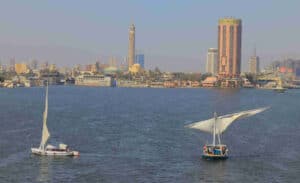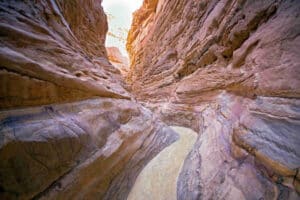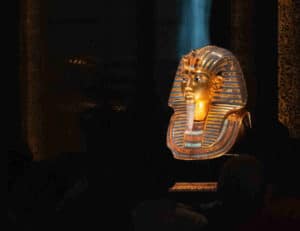Few artists embody romantic art better than what David Roberts did in Egypt. This British painter and engraver toured the country in the mid-nineteenth century, at the height of the Egyptology boom of the time. In this post we travel with this creator who, with his images, contributed to spread the interest and passion for this country, precisely at a time when it was opening wide to the rest of the world, whose most seasoned travelers were eager to discover it in depth.
David Roberts and his context in Egypt
David Roberts, after traveling through southern Spain and immortalizing the Andalusia of that time, set out to go further and enter the land of the Pharaohs, something he did as early as 1838. By then, Jean-François Champollion had already deciphered the hieroglyphs thanks to his study of the Rosetta Stone and Egypt, controlled by the Ottoman Empire, was beginning to glimpse an opening to the world, both in the form of travelers and investors.
Roberts understood the growing interest in Egypt and its ruins, which were not only of interest to antiquities hunters, but also to the new bourgeoisie interested in decorating their homes and offices with images evocative of the land of the pharaohs.
The Scottish artist was noted for his works in watercolor technique, but he also mastered that of lithography, which allowed him an easy reproduction of his drawings and, thus, a recurrent and considerable source of income. The result was his masterpiece, Holy Land, Syria, Idumea, Arabia, Egypt and Nubia, which is an extraordinary travel diary and a magnificent set of 250 lithographs based on what he saw during his journey through the Middle East. And of all this journey, Egypt was the territory that probably dazzled him the most, as it was the one to which he dedicated the most lithographs.
David Roberts’ lithographs in Egypt
There are about 140 lithographs that Roberts composed on different landscapes of what is now Egypt, from the Sinai Peninsula to Cairo. His style has clear signs of precise and virtuous drawing, with balanced and harmonious compositions. The protagonists of them, whether monuments or people, have the authenticity of folklore and the evocation of the decrepit and humble. Everything in its right measure, thus achieving a beauty based on the exotic, the distant and the past, as they were so much to the taste of Romanticism.
In addition to all this, the lithographs of the Holy Land, Syria, Idumea, Arabia, Egypt and Nubia are truly exceptional graphic documents because, although there is a certain romantic idealization in the landscapes, one can also recognize a certain historical fidelity in each scene. Thus, the viewer is surprised to see how buried was the Great Sphinx of Giza, whose head was barely visible at the time. Or the solitary and mystical aspect of the monastery of St. Catherine and the ascent to Mount Sinai.
Moreover, thanks to the fact that his trip reached Nubia, we can now contemplate what this region and its monuments looked like before the flooding of the Nile after the construction of the Aswan Dam, which resulted in Lake Nasser: Abu Simbel and the temple of Isis in Philae in its original location, or even the temples that Egypt gave to its international allies, such as Debod (now in Madrid) or Dendur (now in the Metropolitan Museum of New York).
Because of this beauty mixed with history and travel, lithographs of this masterpiece of art and travel are still being reproduced and sold today, touching the hearts of many, especially those who, like Roberts, have also seen the great monuments of Ancient Egypt up close.
Image: public domain. Berger Collection: id #154 (Denver, Colorado)



